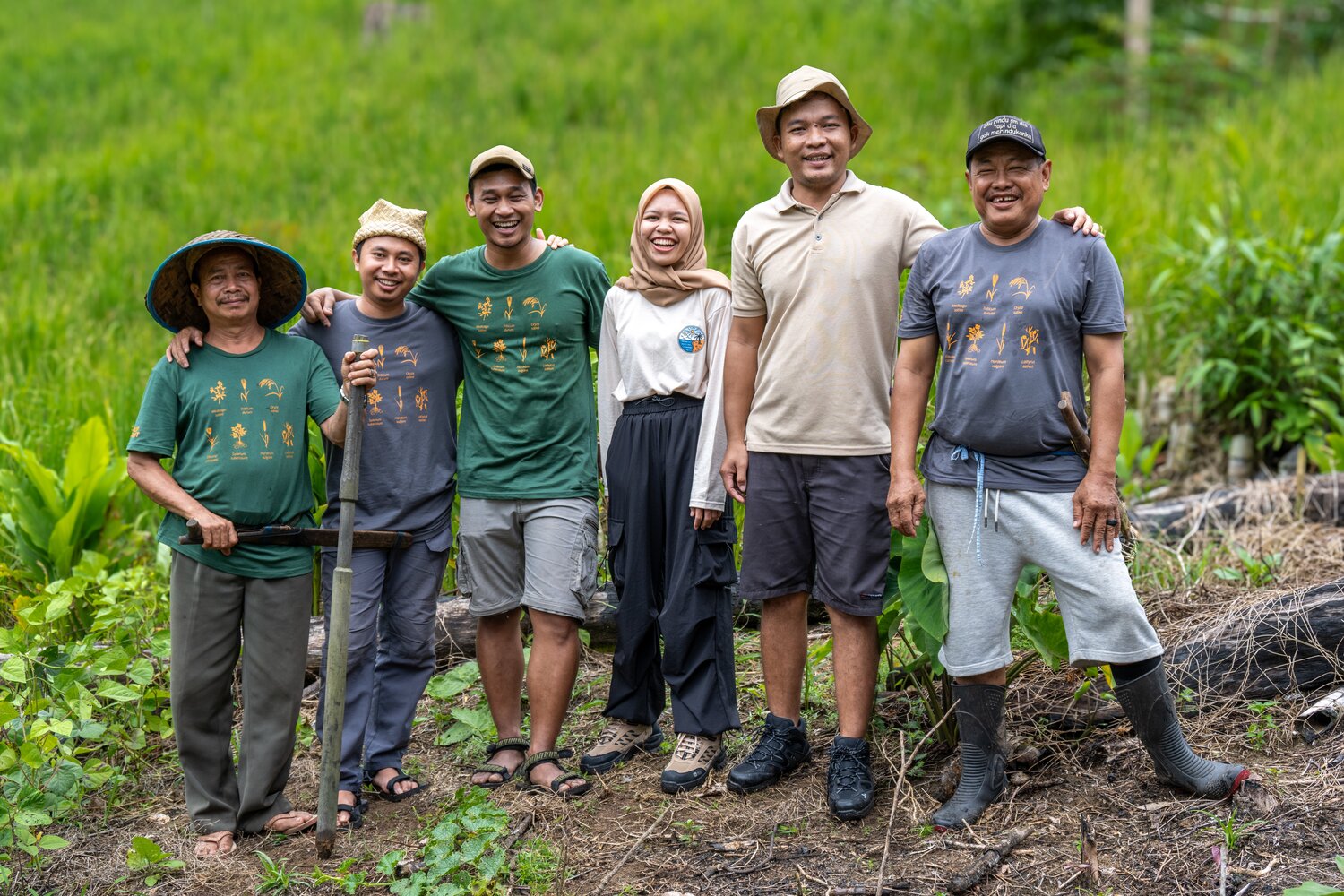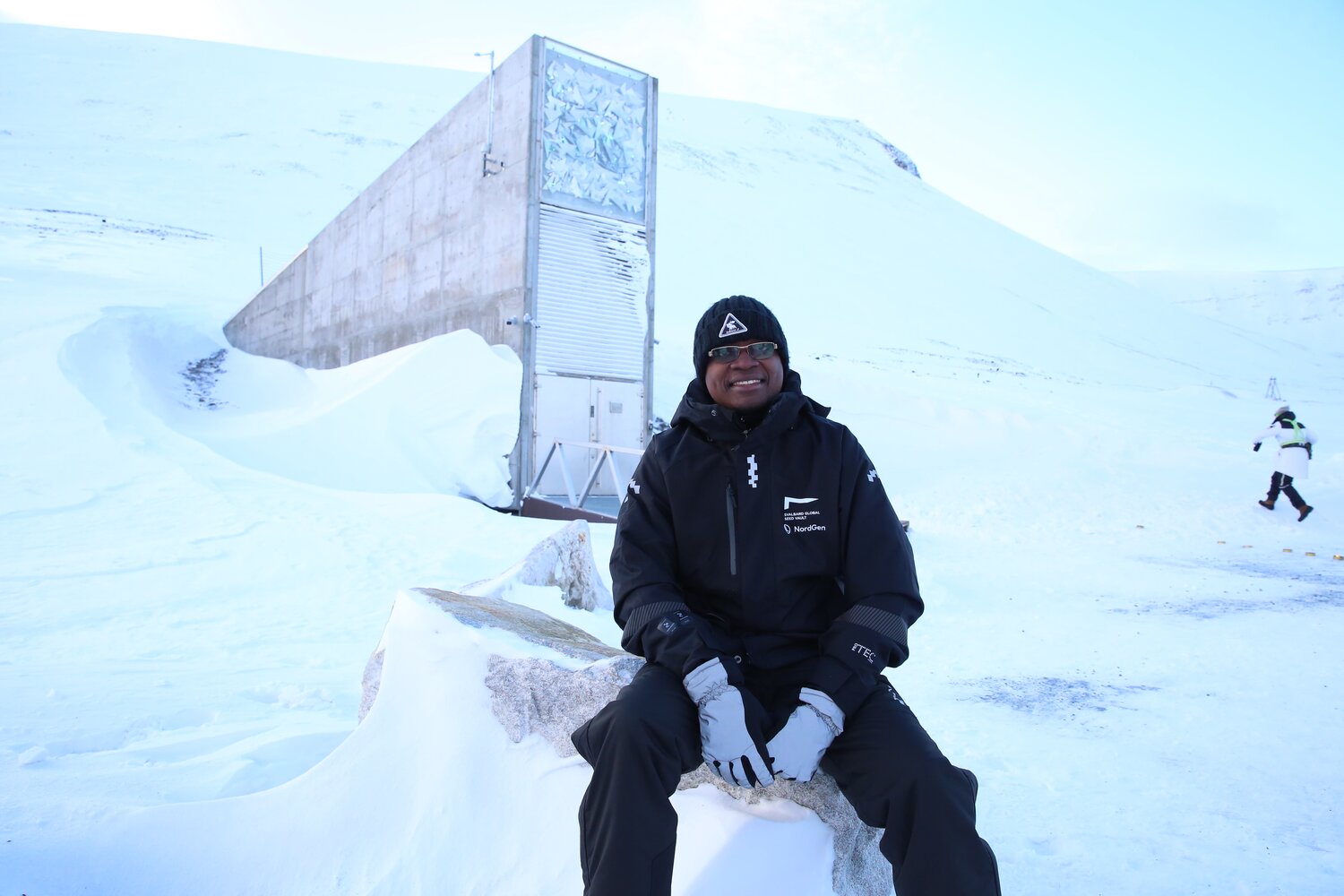Life Insurance for Genebanks

6 May 2024
Genebanks are generally safe. But they are not invulnerable.
More than a decade ago, the International Center for Agricultural Research in the Dry Areas’ (ICARDA) genebank got caught up in the civil war in Syria, and scientists and breeders could no longer access the invaluable seed samples stored there. Fortunately, almost the entire collection had been duplicated and stored safely elsewhere, including at the Svalbard Global Seed Vault, before the war.
Four years later, ICARDA started withdrawing its seeds from the Seed Vault and gradually used them to establish new genebanks in Lebanon and Morocco, making them again available to the world’s plant breeders and scientists.
However, not all genebanks have a plan B in the form of safety duplicates of their collections. Presently, Svalbard has copies of crop diversity from 111 depositors out of more than 1,750 genebanks worldwide. There is space for many more.
Producing these safety duplicates requires growing out the samples, harvesting, cleaning, and processing the seeds and preparing them for long-term cold storage. This is a time-consuming, labor-intensive and expensive task. But it is also a standard genebank operation, one that cannot be ignored nor pushed back for too long.
“Seeds in cold rooms, even under optimal conditions, will eventually die,” says Beri Bonglim, the Crop Trust staff member leading this work for the Biodiversity for Opportunities, Livelihoods and Development (BOLD) project. “Genebanks should refresh seeds once they start losing viability or if they are in short supply.”
This means sowing and harvesting but doing so in a way that preserves the character and uniqueness of each accession. Regeneration of cross-pollinating species, such as maize or pumpkins, can be tricky: not only do you need to grow out a large number of plants to maintain the genetic variation that exists within the population, but you also cannot grow the plants out too close together and at the same time, because they will exchange genes via their pollen. Unfortunately, many genebanks simply do not have the resources to do this crucial work, and their collections could easily be lost. Forever.
BOLD is addressing this head-on by providing grants and technical support to 42 genebanks in 30 countries to help them regenerate seeds from their collections and back them up at another genebank and in the Svalbard Global Seed Vault for long-term safekeeping.
The call for applications for grants went out in late 2021 and the response was overwhelming: the Crop Trust received more than 90 applications from a wide range of genebanks operated by NGOs, Indigenous organizations and universities, as well as from more traditional genebanks. The collections that the women and men behind these institutions sought to save included staples such as wheat and rice, but also indigenous vegetables, underutilized crops and the wild relatives of various crops.
With a BOLD target to duplicate 40,000 seed samples in Svalbard, the work is progressing well — more than 36,000 seed samples have already been regenerated since the project started work in 2022. More than 12,000 seed samples have already been deposited in Svalbard by 16 genebanks in 15 countries and about 7,500 samples have been backed up in a second location since the start of the project.
Between 2023 and 2024, 14 recipients of BOLD regeneration and safety duplication grants were able to deposit seeds in Svalbard for the first time, from Albania, Armenia, Bosnia and Herzegovina, Benin, Burkina Faso, Cameroon, Ghana, Kazakhstan, Kenya, Madagascar, Nigeria, North Macedonia and Zambia.
“This BOLD effort aimed at diversifying the types of depositors that have shipped seed to Svalbard,” said Benjamin Kilian, leader of the BOLD project. “And this is being accomplished. For example, crop diversity from Benin is now in the Seed Vault. We support three different actors there: a university, a small NGO and a 100-year-old research institute.”
Another grant recipient is CATIE, the Tropical Agricultural Research and Higher Education Center in Turrialba, Costa Rica. Having previously deposited over 1,300 seed samples of a range of crops, including squash, tomatoes and chillies, CATIE has recently struggled with regenerating samples that are in poor condition or short supply.
Thanks to the grant through BOLD, the institute is now regenerating more than 1,100 samples of these crops to send to Svalbard and make available to breeders, farmers and other users.
In addition to strengthening CATIE’s capacity to regenerate and maintain its collection, the project gave staff valuable experience in the different regeneration processes and activities.
“I want to thank the Crop Trust, and the BOLD Initiative for providing the resources and facilities that allow us to carry out these activities,” said William Solano, Genetic Resources Researcher at CATIE. “Without these funds, the 1,160 accessions we plan to send to Svalbard would still be only in our genebank’s cold room. And that’s not good enough.”
Not Just Regeneration and Safety Duplication
The regeneration effort is not just about safety duplication; it also provides fresh seed that the genebanks can share with their users, such as plant breeders, researchers and farmers.
“If the genebanks are short on seed stocks, they cannot share their diversity with users,” said Beri Bonglim. “Getting those seeds into the hands of breeders and farmers is crucial to confront the challenge of feeding a growing population under a changing climate.”
The regeneration work under this project has also allowed some partners to characterize the diversity they hold in their collection. For example, BOLD has been working with the genebank at the Anne van Dijk Rice Research Centre in Nickerie, Suriname’s national rice research institute, to regenerate and safety duplicate part of its rice collection.
“This diversity – I know it’s there [in the genebank], but I’ve never seen so much of it in one field,” says Jerry Tjoe Awie, rice breeder and director of the Centre. “In the multiplication fields, we see some accessions that are affected by nothing, while others – even a small fungus on it and it’s gone. Yeah, I’ve already seen some good sources of resistance to pests and diseases.”
“The regeneration and safety duplication work is an invaluable part of the BOLD Project and we are grateful to the Government of the Kingdom of Norway for funding this initiative,” said Stefan Schmitz, Executive Director of the Crop Trust. “Safety duplication is vital to ensuring the continued availability of these irreplaceable genetic resources on which our future food and nutrition security depend — truly, life insurance for genebanks and our future food supplies.”

Nigeria: Crop conservation activities at the genebank of the Faculty of Agriculture at Obafemi Awolowo University (OAU) in Ile Ife, Nigeria, a partner of the BOLD Project in Nigeria. (Photo: Neil Palmer/Crop Trust)

Benin: GBioS Genebank field staff at the Sèdjè-Dénou regeneration site located in the municipality of Zè, in Benin. Nearly 550 accessions of food crops, including amaranth, are regenerated here. Left to Right: Olivia Dadesso, Dèdéou A. Tchokponhoué and Judith Djossou. (Photo: Luis Salazar/Crop Trust)

Bolivia: The University in Sucre, Bolivia, is regenerating and safety duplicating maize and beans, two food security crops for the country. These crops are also intimately tied to the culture, consumed by Indigenous communities like the Quechua and the Guaraní. Sadly, the diversity they consumed for hundreds of years is slowly disappearing. Pictured here, Faustina Cejas, Guaraní farmer from the Cañadillas community, and Heriberto Reynoso, BOLD partner in Monteagudo, say most farmers in the region are growing one maize variety and abandoning the diversity their ancestors grew "because it doesn’t pay". (Photo: Luis Salazar/Crop Trust)

Costa Rica: The Tropical Agricultural Research and Higher Education Center (CATIE) is regenerating 1,160 accessions of three of the most important food crops for Central America: tomatoes, peppers and squash. "These crops are the day-to-day foods of our farmers and our families," says William Solano, Genetic Resources Researcher. (Photo: Luis Salazar/Crop Trust)

Indonesia: The Borneo Institute Foundation (BIT) team with farmers from Mahuning Raya. L to R: Geterson/Papa Depri, Ary Prasetio (Genebank Manager), Standy Christianto (Program Manager), Pija Ramadhani (Database officer), Pritendie (community organizer) and Ahmadi/Papa Dewi. (Photo: Michael Major/Crop Trust)

Papua New Guinea: Sweetpotato regeneration plot at PNG’s National Agricultural Research Institute (NARI) in Lae, Morobe Province. (Photo: Michael Major/Crop Trust)

Svalbard: Back in February 2023, Innocent Dossou Aminon, from the NGO GRIGADEB in Benin, flew for two days to reach Svalbard. In his luggage, he carried a diverse selection of seeds that make up the country's first-ever backup of crop diversity in the Seed Vault. The deposit was supported through the Crop Trust's BOLD Project. (Photo: Luis Salazar/Crop Trust)

Suriname: The Crop Trust's Beri Bonglim poses with Granman Albert Aboikoni and Mugabe Antomoi, holding farm equipment purchased by the BOLD Project to support site operations in Brokopondo, Suriname. (Photo: Luis Salazar/Crop Trust)
Categories: BOLD, Svalbard Global Seed Vault, Food Security, Nutritional Security




